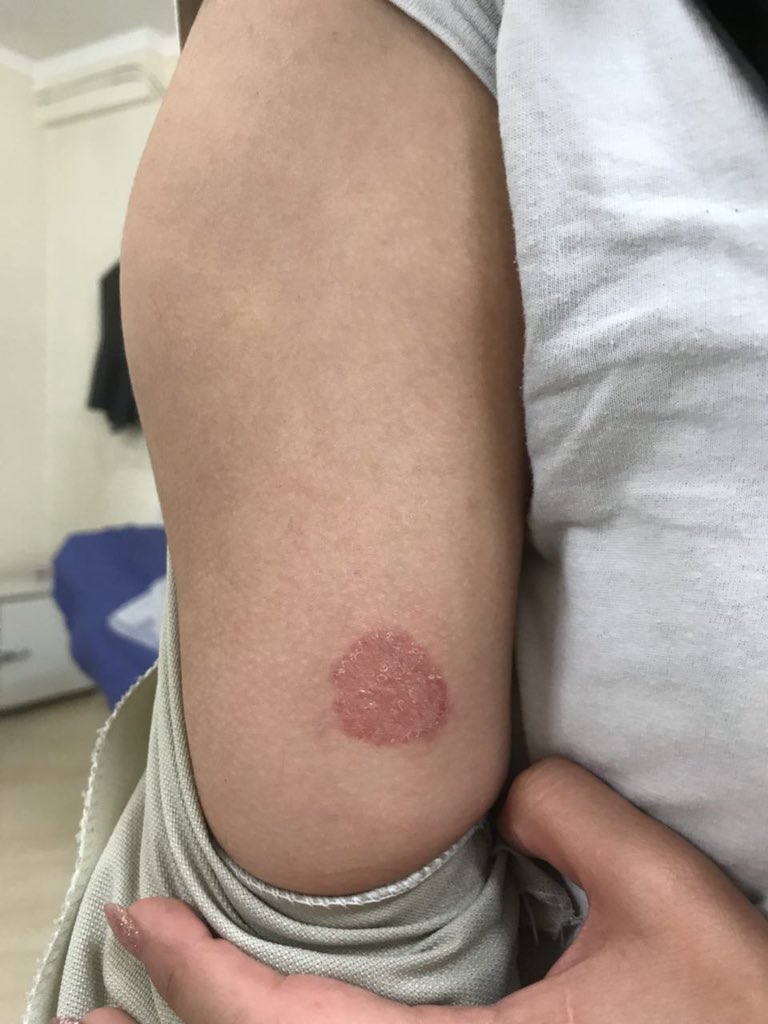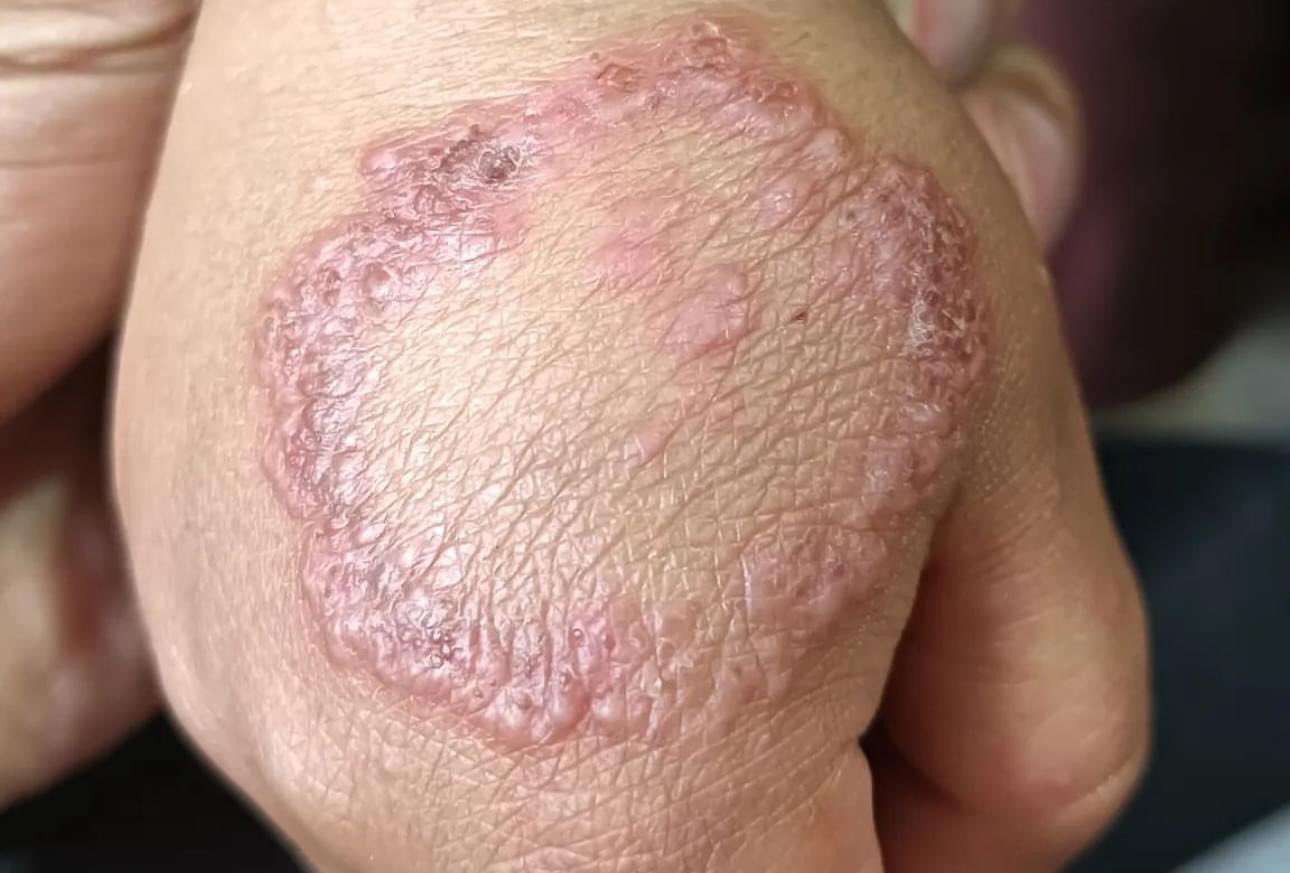Makindo Medical Notes"One small step for man, one large step for Makindo" |
|
|---|---|
| Download all this content in the Apps now Android App and Apple iPhone/Pad App | |
| MEDICAL DISCLAIMER: The contents are under continuing development and improvements and despite all efforts may contain errors of omission or fact. This is not to be used for the assessment, diagnosis, or management of patients. It should not be regarded as medical advice by healthcare workers or laypeople. It is for educational purposes only. Please adhere to your local protocols. Use the BNF for drug information. If you are unwell please seek urgent healthcare advice. If you do not accept this then please do not use the website. Makindo Ltd. |
Tinea Corporis (Ringworm)
-
| About | Anaesthetics and Critical Care | Anatomy | Biochemistry | Cardiology | Clinical Cases | CompSci | Crib | Dermatology | Differentials | Drugs | ENT | Electrocardiogram | Embryology | Emergency Medicine | Endocrinology | Ethics | Foundation Doctors | Gastroenterology | General Information | General Practice | Genetics | Geriatric Medicine | Guidelines | Haematology | Hepatology | Immunology | Infectious Diseases | Infographic | Investigations | Lists | Microbiology | Miscellaneous | Nephrology | Neuroanatomy | Neurology | Nutrition | OSCE | Obstetrics Gynaecology | Oncology | Ophthalmology | Oral Medicine and Dentistry | Paediatrics | Palliative | Pathology | Pharmacology | Physiology | Procedures | Psychiatry | Radiology | Respiratory | Resuscitation | Rheumatology | Statistics and Research | Stroke | Surgery | Toxicology | Trauma and Orthopaedics | Twitter | Urology
🦠 Tinea corporis (ringworm of the body) is a superficial fungal infection caused by dermatophytes. It commonly affects the arms, legs, and trunk but can occur anywhere on the body. Named "ringworm" for its classic ring-shaped lesions, though no worm is involved. It is one of the most frequent dermatology presentations in GP and A&E clinics in the UK.
🔎 Etiology
Caused by dermatophyte fungi from 3 main genera:
- Trichophyton rubrum – most common worldwide 🌍.
- Trichophyton mentagrophytes – often zoonotic.
- Microsporum canis – linked to cats & dogs 🐱🐶.
⚡ Risk Factors
- 🌡️ Warm & humid climates (sports, gyms, tropical travel).
- 👨👩👧 Close contact with infected people or pets.
- 🧦 Shared towels, clothes, mats, or sports gear.
- 💦 Hyperhidrosis (excess sweating).
- 🛡️ Immunosuppression (HIV, diabetes, steroids).
🩺 Clinical Presentation
- Lesions:
- Annular, scaly, red plaque with central clearing ➝ “ring” 🔴.
- Active advancing edge with scaling & itch.
- Multiple lesions may merge into large patches.
- Symptoms:
- Pruritus (itch) is the hallmark 🚨.
- Mild burning or irritation in some cases.
- Common Sites: Arms, legs, trunk, chest, back, face.
🖼️ Typical annular lesions:


🧾 Diagnosis
Usually clinical; investigations if atypical or recurrent:
- 👀 Clinical Exam: Ring-shaped, scaly plaques.
- 🔬 KOH prep: Hyphae visible in scrapings.
- 🧫 Culture: Useful for resistant/recurrent cases.
- 💡 Wood’s Lamp: Microsporum fluoresces green.
🔀 Differential Diagnosis
- Psoriasis 🧴
- Atopic eczema 🤧
- Nummular eczema
- Pityriasis rosea 🌹
- Granuloma annulare
- Cutaneous lupus erythematosus
💊 Treatment
Choice depends on severity, extent, and patient comorbidity:
- Topical antifungals (first-line, localised):
- Azoles: clotrimazole, miconazole, ketoconazole.
- Allylamines: terbinafine (often most effective).
- Applied BID for 2–4 weeks ⏳.
- Oral antifungals (extensive/resistant):
- Terbinafine 250mg OD 2–4 weeks.
- Itraconazole 100–200mg OD 2–4 weeks.
- Griseofulvin 500–1000mg OD 4–6 weeks (children, scalp involvement).
- Supportive advice: Hygiene, dry skin, avoid sharing items.
🛡️ Prevention
- Avoid contact with infected pets/people.
- No sharing towels/clothes/gym equipment.
- Keep skin clean & dry; wear loose cotton clothing 👕.
- Use antifungal powder if prone to recurrences.
⚠️ Complications
- 📈 Spread to other areas / household contacts.
- 🦠 Secondary bacterial infection from scratching.
- 🎭 Tinea incognito: Steroid creams mask & worsen infection.
📊 Prognosis
✅ With appropriate antifungals, most cases clear in 2–4 weeks. ♻️ Relapse is common if underlying risk factors (moisture, pets, poor hygiene) are not addressed. Immunosuppressed patients may require longer systemic therapy.
📌 Summary
Tinea corporis = itchy, annular fungal infection of the skin. 🔑 Diagnosis: clinical ± KOH prep. 💊 Treatment: topical antifungals ➝ oral if widespread. 🛡️ Prevention: hygiene, avoid contact & sharing. 🌟 Prognosis: excellent with treatment, but recurrence common.